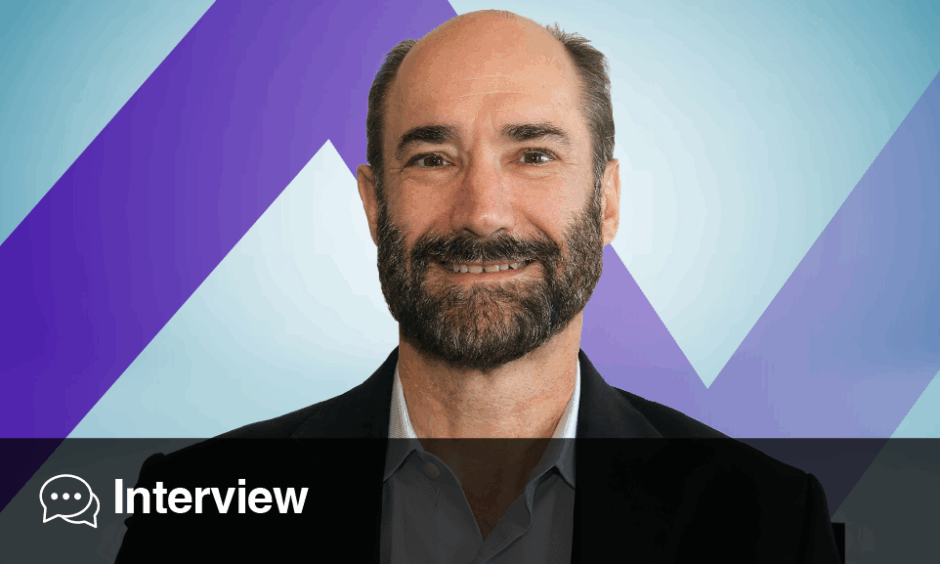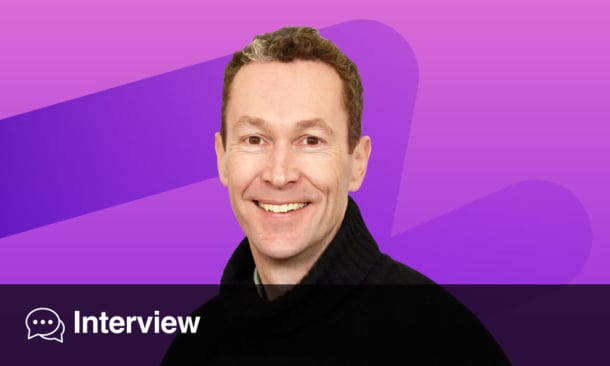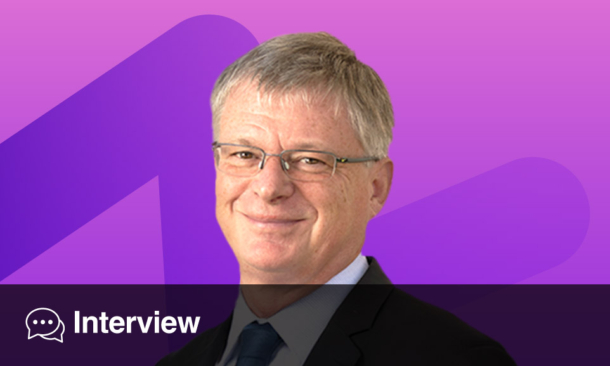Michael Snyder: Director, Center for Genomics and Personalized Medicine, Stanford University School of Medicine, California, USA
Citation: EMJ. 2025; https://doi.org/10.33590/emj/ZZLO2668
![]()
Your lab was the first to perform a large-scale functional genomics project. Looking back, what were the biggest challenges and breakthroughs from that effort?
It really was a paradigm shift at the time. People were very focused on studying genes and proteins one at a time, a very reductionist approach. Our claim to fame was that we began studying thousands of genes and proteins simultaneously, working on yeast at the time, to understand how they functioned together in biological processes. The goal was to get a more complete picture.
When I moved to Stanford about 16 years ago, we wanted to apply that same concept to medicine to get a more comprehensive view of what is happening in health and disease. I always thought it was strange that we focused so much on illness rather than health. Joining the medical school gave me the opportunity to dig into medicine at a systems level and also to study health in that same way.
It struck me when I first arrived at Stanford, California, USA, and experienced the USA healthcare system. They take your blood, heart rate, and a few other measurements, and then give you maybe 15 numbers back. I thought, this is crazy, we should be measuring so much more to get a full view. That is really how it started: applying systems-level approaches to medicine and health. We were also a bit unusual in that we were comfortable working across disciplines, including DNA, RNA, proteins, and later metabolites, whereas most people specialised in only one. When I came to Stanford, we built new capabilities like metabolomics and expanded our proteomics work. We also developed RNA sequencing, which was our invention. So, stepping back, the goal was to get a comprehensive view of health and disease. Along the way, we created tools like RNA sequencing and protein chips to make that possible.
When you began emphasising health rather than illness, did you face resistance or difficulties convincing others of the importance of that shift?
Yes, people were just not thinking that way at the time. We weren’t funded for it. I was able to start because, when you move to a new institution, you get some unrestricted funds, and I used that to begin this work. We’ve never actually had dedicated funding to study health directly.
We were fortunate when the Human Microbiome Project (HMP) came along because it focused on the microbiome in a healthy context, which fit perfectly with what we were doing. More recently, there is the Human Virome Project (HVP), which aims to catalogue all viruses associated with humans, including those in bacteria and microbes. Again, our cohort aligned well with that. Our study started with about 109 very enthusiastic volunteers who heard what we were doing. Initially, we started with me as the first subject and, during the profiling, we actually predicted and then detected my diabetes. I was a bit of a test case or guinea pig for getting the methods working.
We follow people longitudinally, measuring them deeply while they are healthy and also when they become ill. We collect billions of measurements, about 135,000 parameters per person, and we have seen tremendous results. In the first 3.5 years, we identified 49 major health discoveries, often before symptoms appeared. Some were potentially life-saving, like early lymphoma or serious heart issues. That is the power of deep data. It gives a much deeper dive into a person’s health. And yes, we always test procedures on me first. For example, in an exercise study, we learned the hard way that we should not place a catheter at the elbow while someone is running to their VO₂ max. Doing test runs avoids those issues for participants.
What inspired you to design the first longitudinal integrative personal omics profile (iPOP)? And can you give a quick explanation of what this is?
What made it possible were the new technologies emerging at the time, some of which we helped develop. We sequence each person’s genome once, which lets us predict genetic risk. Then we collect blood, urine, and microbiome samples, everything from immune cells to plasma to stool, and analyse them for RNA (the transcriptome), proteins, metabolites, and lipids. We even look at autoantibodies in some cases.
About 11 or 12 years ago, fitness trackers became available, and we realised that they could be powerful health monitors. We added them to our cohort. This was not recognised at the time, but it has turned out to be incredibly valuable.
So, in short, iPOP is about combining all these data layers, including genomics, transcriptomics, proteomics, metabolomics, microbiome data, wearable data, and clinical data, to create a comprehensive picture of a person’s health. In the first few years, we had 49 major health discoveries, all pre-symptomatic. The analogy I like is that if your health is a 1,000-piece jigsaw puzzle, traditional medicine gives you maybe five or six pieces. With iPOP, we are getting 700 or 800.
We can see genetic risk, early signs of disease, and biochemical changes before symptoms arise. It is still a research study, much deeper and more expensive than clinical care, but the goal is to learn what is most important and eventually make it accessible to everyone.
As noted before, in the USA, healthcare focuses on treating illnesses, not maintaining health. We want to shift that paradigm. Some of this work is now being scaled through companies, since that is often the only way to bring it to the public here.
You have pioneered the use of wearable devices for detecting disease signals. How do you envisage their role evolving over the next decade in managing chronic conditions like diabetes or cardiovascular disease?
Wearables tell you when something is off, not necessarily what it is. For example, if your heart rate rises and variability drops, something is wrong. It could be a viral infection or even stress. We think they will also be powerful for monitoring mental health, and we are working on that now.
We are very focused on remote monitoring, combining wearables with micro-sampling, like small drops of blood. From a few drops, we can measure thousands of molecules, including metabolites and proteins, very reproducibly. One of our spin-out companies now profiles 650 metabolites from mailed-in blood samples, covering 20 wellness categories such as inflammation, oxidative stress, and organ health.
With all this data, and with AI, we can integrate lifestyle and health information to make highly specific recommendations. The goal is not just longer lifespan, but longer health span. Right now, the average person spends 11–15 years in poor health at the end of life. We want people to stay healthy until the very end.
You have followed over 100 individuals with iPOP. What new biological insights have emerged from that cohort?
Some major findings include detecting early lymphoma and pre-cancers that could have developed into aggressive cancers. We also identified people with serious heart issues; one detected through genome sequencing and another through wearables. We found a BRCA mutation in one participant, allowing them to get proactive screening. Nine participants who were thought to have Type 2 diabetes were reclassified, with one having maturity onset diabetes of the young, a rare form requiring different treatment.
These are the kinds of insights that come from deep profiling. Whole-body MRI, for example, has been controversial. Physicians often discourage it for healthy people, but I believe it is valuable when done longitudinally. Everyone has nodules; the key is to know your baseline and see if any are growing. That is the essence of precision health.
It can also be reassuring. I know someone with a family history of ovarian cancer who was relieved to see that her scans were normal. So, it is not just about detecting problems; it is about knowing what is normal for you.
Since the Human Genome Project, genomics has advanced rapidly. In 2016, you published “Genomics and Personalised Medicine: What Everyone Needs to Know.” Which innovations since then do you wish you could include if you were writing it now?
We managed to include wearables in the book at the last minute, when they were still just fitness trackers. They have turned out to be far more powerful than I expected. For example, my smartwatch detected my Lyme disease, and we can now detect COVID-19 about 3 days before symptoms appear.
If I were updating the book now, I would include things like retinal scans and smartphone-based measurements, and even voice recognition for mental health tracking. When we first used wearables for respiratory infection detection, we also picked up alerts caused by workplace stress. Mental health is an under-studied area with few biomarkers, and I think that this deep profiling approach can help identify new ones.
We also now understand ageing much better. Everyone ages differently, what we call ageotypes. Some people age faster metabolically, others immunologically. By identifying your ageing patterns, you can take targeted action through diet, exercise, and lifestyle.
Continuous glucose monitors are another game-changer. Once people use them, they completely change how they eat because they can see what spikes their glucose and what does not. We have even subtyped diabetes using this kind of data, revealing differences like β-cell defects versus insulin resistance, which respond to different treatments. So yes, I would include all of that, including wearables, AI integration, mental health monitoring, and precision approaches to ageing and chronic disease.
If you could give one piece of advice to individuals navigating the growing world of personalised medicine, what would it be?
We are all going to have AI doctors, systems that integrate all your data and make specific recommendations. I have petabytes of data about myself, and AI tools have already told me things my physicians had not noticed. These systems will not replace doctors but will augment them, providing insights that they might not see otherwise. There is simply too much information for any one person to manage. I think the most important concept is longitudinal monitoring, tracking your own trajectory over time. If something consistently changes or drops, that means something is wrong. Medicine today often misses that.
So, my advice is to embrace data, monitor yourself over time, and use that information to stay healthy. And, as I always say, strength training is essential too.








